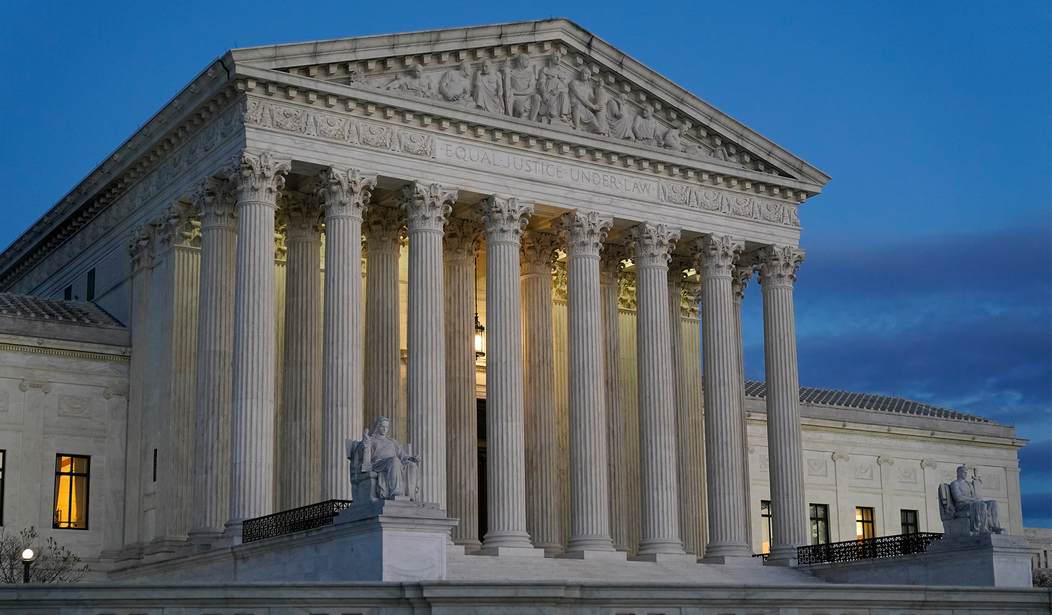In its last conference before heading out for summer recess, the Supreme Court granted cert to U.S. v. Rahimi on Friday; setting up a fight over the scope of the Court’s history, text, and tradition test spelled out in last year’s Bruen decision.
As we’ve written about here previously, the case involves the federal prosecution of Zachey Rahimi, who’s accused of illegally possessing a firearm in violation of a domestic violence restraining order. Rahimi (or rather, his public defenders) challenged those charges after the Supreme Court issued its decision in Bruen last year, arguing that the modern day prohibition on firearms possession for those subject to the civil restraining order falls outside the historical scope of gun control laws and earlier this year the Fifth Circuit Court of Appeals agreed with that proposition.
In its decision, the three-judge panel on the Fifth Circuit determined that the question at the heart of the case “is not whether prohibiting the possession of firearms by someone subject to a domestic violence restraining order is a laudable policy goal,” but whether the federal statute in question is constitutional. This is one of many cases around the country where the Department of Justice has been claiming that the Second Amendment only protects the right of “law-abiding citizens” to keep and bear arms; a position that the Fifth Circuit rejected, noting that there’s no limiting principle in the government’s position. From the Fifth Circuit’s opinion:
According to the Government, Heller and Bruen add a gloss on the Second Amendment that restricts its applicability to only “law-abiding, responsible citizens,” Heller, 554 U.S. at 635, and “ordinary, law-abiding citizens,” Bruen, 142 S. Ct. at 2122. Because Rahimi is neither responsible nor law-abiding, as evidenced by his conduct and by the domestic violence restraining order issued against him, he falls outside the ambit of the Second Amendment. Therefore, argues the Government, § 922(g)(8) is constitutional as applied to Rahimi.
… Heller explained that the words “the people” in the Second Amendment have been interpreted throughout the Constitution to “unambiguously refer[] to all members of the political community, not an unspecified subset.” 554 U.S. at 580. Further, “the people” “refer[] to a class of persons who are part of a national community or who have otherwise developed sufficient connection with this country to be considered part of that community.” For those reasons, the Heller Court began its analysis with the “strong presumption that the Second Amendment right is exercised individually and belongs to all Americans,” , and then confirmed that presumption.
Heller’s exposition of “the people” strongly indicates that Rahimi is included in “the people” and thus within the Second Amendment’s scope.
…
Indeed, the upshot of the Government’s argument is that the Second Amendment right can be readily divested, such that “a person could be in one day and out the next: . . . his rights would be stripped as a self-executing consequence of his new status.” But this turns the typical way of conceptualizing constitutional rights on its head. And the Government’s argument reads the Supreme Court’s “law-abiding” gloss so expansively that it risks swallowing the text of the amendment.
Further, the Government’s proffered interpretation of “law-abiding” admits to no true limiting principle. Under the Government’s reading, Congress could remove “unordinary” or “irresponsible” or “non-lawabiding” people—however expediently defined—from the scope of the Second Amendment. Could speeders be stripped of their right to keep and bear arms? Political nonconformists? People who do not recycle or drive an electric vehicle? One easily gets the point: Neither Heller nor Bruen countenances such a malleable scope of the Second Amendment’s protections; to the contrary, the Supreme Court has made clear that “the Second Amendment right is exercised individually and belongs to all Americans,” Heller, 554 U.S. at 581. Rahimi, while hardly a model citizen, is nonetheless among “the people” entitled to the Second Amendment’s guarantees, all other things equal.
While Rahimi won’t be the vehicle that decides the fate of bans on so-called assault weapons or the overreaching “sensitive places” that states like New York and New Jersey have imposed on concealed carry holders, it does have the potential to answer a hugely important question; just who are “the people” who possess the right to keep and bear arms.
The Supreme Court has taken pains in its previous Second Amendment cases to note that nothing in those decisions should cast doubt on “longstanding prohibitions” on gun ownership for felons and those adjudicated as mentally defective, but Zachey Rahimi doesn’t fit either of those categories, though he’s hardly the perfect poster child for Second Amendment advocates.
While gun rights activists have taken aim at state and local restrictions in the aftermath of the Supreme Court ruling, a key battleground is on a series of federal restrictions that are listed in a section of law called 18 U.S. Code Section 922.
One of those provisions — 922(g)(8) — concerns anyone “subject to a court order” in which they were found to be a threat to a domestic partner or child.
Zackey Rahimi, an accused drug dealer in Texas whose partner obtained a restraining order in February 2020, is one such person.
During an incident in an Arlington, Texas, parking lot the previous year recounted by the federal government in court papers, Rahimi was accused of knocking the woman to the ground, dragging her to his car and pushing her inside, knocking her head on the dashboard in the process. He also allegedly fired a shot from his gun after realizing that a bystander was watching.
While the protective order was in effect, Rahimi was implicated in a series of shootings, including one incident in which he allegedly fired bullets into a house using an AR-15 rifle, the federal government says.
Rahimi faced state charges for the domestic assault and another assault against a different woman.
As the Fifth Circuit pointed out in its decision, if the state of Texas wanted to keep Rahimi away from guns it had other options than enforcing the gun prohibition portion of the domestic violence restraining order, which is a civil, not criminal order. The state could have requested Rahimi be held without bond until trial, for instance, arguing that he posed a danger to himself or the community, but prosecutors didn’t take that step. As the Fifth Circuit panel opined:
When he was charged, Rahimi was subject to an agreed domestic violence restraining order that was entered in a civil proceeding. That alone does not suffice to remove him from the political community within the amendment’s scope. And, while he was suspected of other criminal conduct at the time, Rahimi was not a convicted felon or otherwise subject to another “longstanding prohibition on the possession of firearms” that would have excluded him.
…
Doubtless, 18 U.S.C. § 922(g)(8) embodies salutary policy goals meant to protect vulnerable people in our society. Weighing those policy goals’ merits through the sort of means-end scrutiny our prior precedent indulged, we previously concluded that the societal benefits of § 922(g)(8) outweighed its burden on Rahimi’s Second Amendment rights. But Bruen forecloses any such analysis in favor of a historical analogical inquiry into the scope of the allowable burden on the Second Amendment right. Through that lens, we conclude that § 922(g)(8)’s ban on possession of firearms is an “outlier that our ancestors would never have accepted.” Id. Therefore, the statute is unconstitutional, and Rahimi’s conviction under that statute must be vacated.
It’s far too early to offer any predictions about how the Court will decide this case, especially because this is one of those issues where we could see some strange bedfellows on the bench. The liberal flank of the Court has been in staunch opposition to recognizing the Second Amendment rights for anyone (law-abiding or not), but Chief Justice John Roberts and Brett Kavanaugh have also taken pains in the past to note that neither Heller nor Bruen should upend any and all gun laws. A 5-4 majority reversing the Fifth Circuit’s decision isn’t out of the question here unfortunately, though it’s hard to see how a majority could reach that conclusion while still faithfully applying the text, history, and tradition test the Court outlined just last year.
If they do, there’s a real risk that the decision could stretch the definition of “historical analogues” to the point that anti-gun politicians and unelected officials could justify adopting all kinds of infringements on the right to keep and bear arms using old laws that hardly bear a passing resemblance to modern day restrictions. And if the Supreme Court agrees with the DOJ’s position that only “law-abiding citizens” possess the right to keep and bear arms, get ready for blue states to craft a lot of new laws barring gun possession for the most minor of criminal offenses. Ultimately, the most important outcome of the case may not be whether a domestic violence restraining order can prohibit gun ownership outright, but just who, exactly, the Second Amendment protects against government’s infringement on a fundamental right.
It’s also quite possible that the Court could craft a narrow decision that applies to Rahimi, but leaves unresolved the larger question about “law-abiding citizens” versus “the people”. The Third Circuit recently issued an en banc decision rejecting the lifetime prohibition on gun ownership for a Pennsylvania man convicted of a non-violent misdemeanor punishable by five years in prison, which is covered under a different section of 922(g), and that case is likely going to be heard in conference when the Court returns in the fall. SCOTUS may end up focusing exclusively on 18 U.S.C. § 922(g)(8) in Rahimi and wait for a case like Range v. Garland to flesh out the scope of the Second Amendment’s protections, but either way we won’t have to wait another ten years for the Court to weigh in on a Second Amendment case. In fact, Rahimi is just the first of a flood of 2A cases that will coming before the court for consideration in the next few months.









Join the conversation as a VIP Member